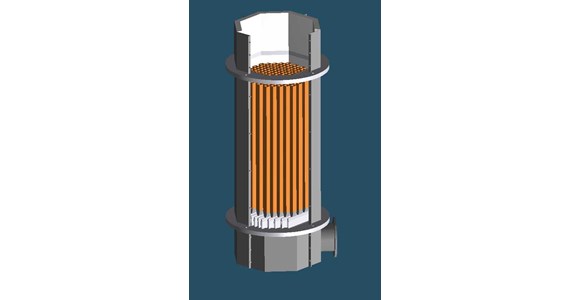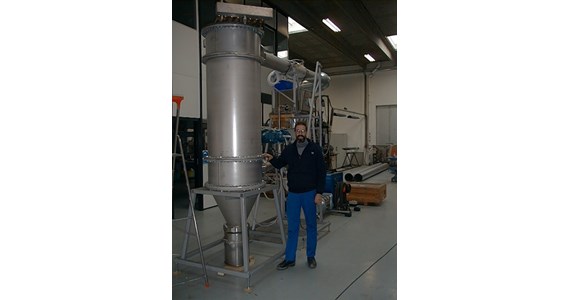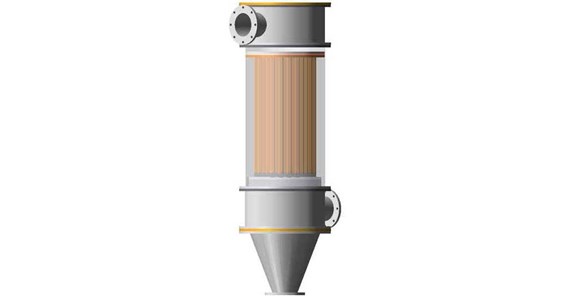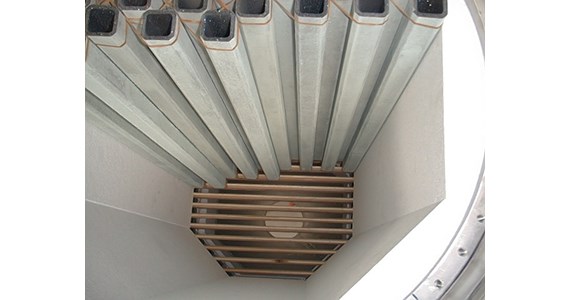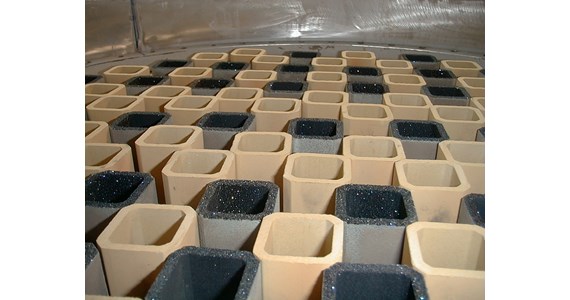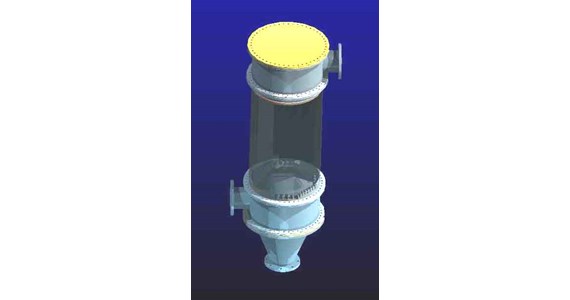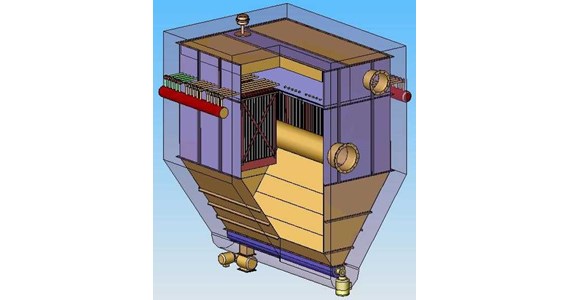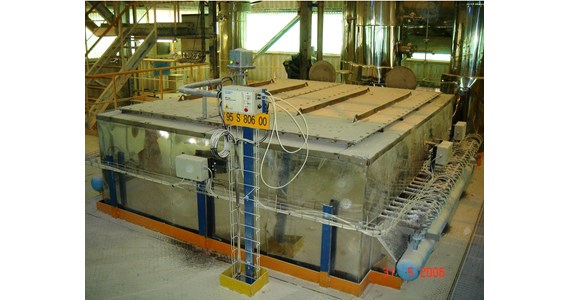HotGaSys R&D project
The objective of the HotGaSys research projects was to develop a super compact huge Hot-Gas-Particulate-CLEAN-UP-System. The proposed system consists of an assembled giant honeycomb unit, which could reach as much as 3 meters in length / height and 10 meters in diameter.
Today’s monolithic ceramic honeycomb structures are rarely produced with diameters and length of more than 500 mm. The proposed system consists of an assembled giant honeycomb unit which could reach as much as 3 meters in length and 10 meters in diameter, with as high as 50 m2/m3 (filtration surface / filter volume). The developed system will have the following distinct characteristics compared to similarly sized candle filter systems (typical with 8-12 m2/m3) as well as small one piece honeycomb (monolithic & cross flow with up to 190 m2/m3) filter systems though featuring further:
- Lowering system breakdown based on; 1. Considerable increase in mechanical strength, >25 MPa. 2. Ash bridging eliminated. 3. Lack of thermal stress over the unit structure’s cross section. 4. Reduced dust penetration into the walls.
- Higher operating temperature, as high as 1,000°C based on; pure, non-clay bonded non-oxide ceramics
- Higher plant efficiency based on; 1. Considerably lower pressure drop with filtration efficiency above 99.9%. 2. New applications possible.
- System cost reduction based on; 1. Expected half the system weight for the same filtration area as candle based systems. 2. More than doubling the filtration surface to volume ratio resulting in vessel size reduction. 3. Installation complexity reduced.
- One important feature of the proposed system is the possibility for a built-in catalytic conversion arrangement.
Partners:
- Stobbe Tech, Denmark
- ABB, Sweden
- CPERI, Greece - apt.cperi.certh.gr
- Cereco, Greece
- CTI, France - ctisa.fr
- Danish Technical University, Denmark - mek.dtu.dk
Project title: “Compact Hot Gas Clean-up System for Particulate Removal”
The HotGaSys research project was sponsored by the EU commission FP5 Joule 3 / Non-Nuclear Energy Program. Project period: spring 1998 to 2001.
Fortunately partner CTI were able to find a customer and create a functional prototype based on the project results.
|
Manufacturer |
NGK Ltd. |
Stobbe |
Stobbe |
Schumacher |
Cerel |
LiqTech |
|
Compare the HotGasSys concept against conventional candle filters and others. How much filter area will be possible to fit inside a vessel example with inside diameter of 4.2 meter and 2 meter high (13.9 m2 cross section). The NGK is a thought example - in practice not possible to manufacture. |
||||||
|
Type |
Honeycomb |
Honeycomb |
Honeycomb |
Candle |
Candle |
Candle |
|
Brand name |
|
HotGasSys |
HotGasSys |
DIA |
Cerafil |
CeraTrap |
|
Dimension, mm |
150x150x500 |
20x20x1500 |
40x40x1500 |
Ø60x1500 |
Ø200x1500 |
Ø60x1500 |
|
Material |
Cordierite |
pure SiC |
pure SiC |
clay / SiC |
Oxide fibers |
pure SiC |
|
wall thickness, mm |
1 |
2 |
4 |
15 |
20 |
3 |
|
Number of cells across the centre line |
420 |
210 |
105 |
42 |
14 |
42 |
|
Candle diameter, mm |
|
|
|
60 |
200 |
60 |
|
Cell spacing, mm |
10 |
20 |
40 |
100 |
300 |
100 |
|
Open side width per square cell, mm |
9 |
18 |
36 |
|
|
|
|
Efective filtration surface area per cell, m2 |
0.018 |
0.108 |
0.216 |
0.284 |
0.945 |
0.284 |
|
Number of substrate cells per m2 |
10,000 |
2,500 |
625 |
100 |
11 |
100 |
|
Total number of inlet cells / candles |
69,458 |
17,364 |
4,341 |
1,389 |
154 |
1,389 |
|
Total effective filtration area, m2 |
1250 |
1875 |
937 |
393 |
145 |
393 |
|
Specific filtration area, m2 / m3 |
180 |
90 |
45 |
18.9 |
7 |
18.9 |
|
Cell dimension is depending on type of application, type of particles, gas speed, regeneration / cleaning principle. |
||||||
What is the HotGasSys system?
Dust-Trap (a project 5 years earlier – see other page) relates to a very large filter unit for separating solid particles from a hot gas containing solid particles. The concept is based on a giant honeycomb manufactured in Silicon Carbide and suitable for very large diesel engines ranging 1 - 50 MW power output and for PFCB, coal fired power plants, gasification plants, etc ranging 5 - 250 MW.
Comparing our HotGasSys concept against conventional candle filters, then HotGasSys has among others the following advantages:
- Overcome well recognized problems with candle technology in terms of mechanical failure due to ash bridging resulting in filter system breakdown and costly downtime
- Thermal stability and materials compatibility also with complicated gas phase environment
- High filtration / collection efficiency >99.7% with a membrane added to the tubes
- Low pressure drop filter media with high porosity ranging 40%
- As the product is pure SiC and not clay bonded for mechanical strength >25 MPa
- Operating temperature >1000°C
- Considerably lower pressure drop compared to conventional candle based systems
- Half the system weight for the same volume compared to candles or doubling the filtration surface to volume ratio
- Considerably reduced system price as to the much more compact size with benefit of a smaller vessel
Depending on the requirements in terms of pore size / collection efficiency a micro porous membrane should be either based on:
- the F-80 grain / 90 µm pore base material with a single layer Al2O3 powder based composite coating having a pore size of 10 µm and thickness of ~200 µm
- the F-100 grain / 55 µm pore base material with a single layer Al2O3 powder based composite coating having a pore size of 5 µm and thickness of ~200 µm
Comparison of the membranes on the same filter element then filtration / collection efficiencies are:
- Uncoated 90 µm pore size tube ~90.5 %
- Coated 90 µm pore size tube with 10 µm pore size Alumina membrane - 99.7 %
It is also important for the system life time that the membrane offer much better removal of collected ash, dust, etc.
HotGasSys design for large diesel engines may also take advantage of a fuel additive to optimize the character of the soot (more dry) and at the same time lower the soot oxidation temperature.
In one example, such a kind of giant HotGaSys system was designed for a 18 MW 2-stroke MAN diesel generator set for the island Barbados.
Per Stobbe - 2005

